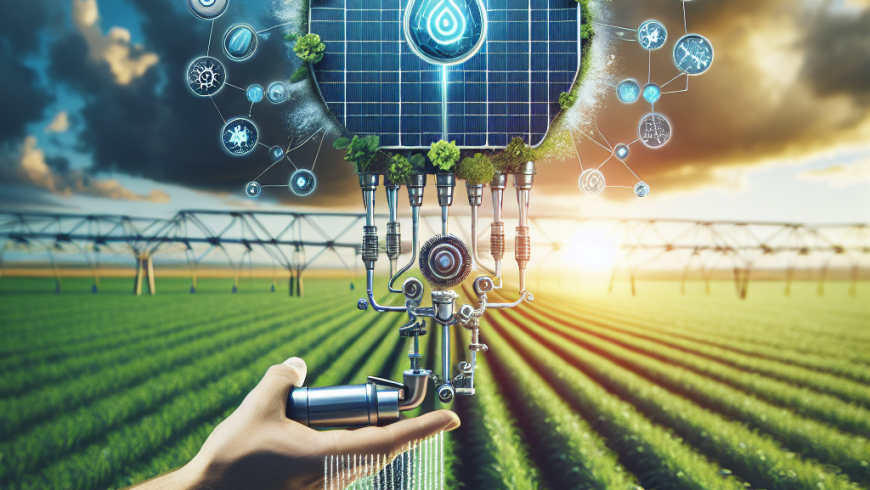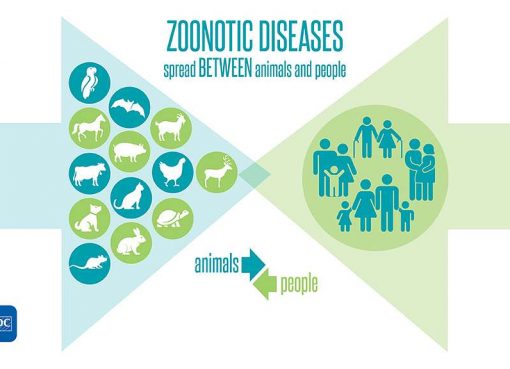Kandarpa Boruah*, Nilotpal Ghosh, Prabodh Kumar Hembram, Debapritam Deb and Shehnaaz Rahman
Department of Livestock Production Management
West Bengal University of Animal and Fishery Sciences, 37 K S Sarani, Kolkata 700037, West Bengal, India
*Corresponding author:kandarpaboruah46@gmail.com
Artificial intelligence (AI) and the Internet of Things (IoT) are two ground-breaking technologies that are revolutionizing how we interact with the world around us. Both the technologies are the most fast-growing technologies that are revolutionizing many industries, including agriculture, veterinary and fishery. Internet of Things (IoT) refers to a system of interconnected devices and/or sensors that transmit and relay localized information and parameters over a closed or semi-open wireless network (Isaac, 2021). Artificial intelligence (AI) is defined as the property of machines that mimic human intelligence as characterized by behaviours such as cognitive ability, memory, learning and decision making (Encyclopaedia of Bioinformatics and Computational Biology, 2019). IoT is used to collect and handle the huge amount of data that is required by the Artificial Intelligence algorithms. IoT is like the body and AI is the brain, which together can create new proposition, business models and services.
It is most essential for the livestock industry to depend on modern technology and innovative approaches to bring about better yields with the most efficient use of limited resources. Therefore, in the recent time, it has become important to apply the latest technological advancements in livestock and poultry farming for its desired growth. The integration of the Internet of Things (IoT) and Artificial Intelligence (AI) in livestock farming represents a transformative shift towards more efficient, sustainable, and productive agricultural practices. The use of IoT and AI in the livestock farming is one the most efficient and effective way of enhancing efficiency in farming practices in modern time. IoT and AI can play various roles in livestock farm management, field handling to research scenario for enhancing the outcome of intended production. Together, IoT and AI enable what is often referred to as ‘Smart Farming’ or ‘Precision Livestock Farming.’ This approach tailors the care and management of animals based on individual needs, leading to better resource utilization and reduced environmental impact.
Application of IoT and AI in livestock farming
- Animal Identification and Traceability: Unique animal identification is the cornerstone measure to build other applications. This can be achieved using the electronic IDs (EIDs) like the classic RFID and computer vision techniques with machine learnt classification on unique body patterns. Measures like identifying cattle with the muzzle print are being experimented in the industry. Identification helps not just monitoring the animal in question but also be utilised for traceability in cases like food traceability in farm to fork market connect and field progeny testing (FPT) programme.
- Monitoring the Physiology of Animals: The physical and physiological data of animals are recorded on the electronic register in the form of a mobile app. The vital body parameters like weight, temperature, heart rate, respiratory rate, stress levels, heat and pregnancy detection can be monitored using vital and environmental sensors available and integrated to the farm management system for data collection, analysis and advisory over cloud. These parameters in turn will give direction to the manager to attend the abnormal animals at the earliest. Thus, animal welfare is ensured which otherwise be ignored by human beings.
- Studying the Animal Behaviour: Using vision analytics on camera streams fused with accelerometer, data can be obtained to monitor the movement and the behaviour of individual animal against the expected behaviour from the historical data. This is useful in identifying animals suffering from disaeses/symptoms like laminitis, choking, Traumatic Reticulo Pericarditis (TRP), etc., and is also useful to detect the hyperactive oestrus and diseased animals with lethargy.
- Maintaining Animal Shed Environment: Ambient sensors monitor the parameters like housing temperature, relative humidity, wind flow to operate heater, cooler, air flow controller in a feedback loop and alert the farm management system.
- Herd Monitoring: Sensors attached to the livestock collars define the geo-fencing capabilities and track the herd via GPS. Various local parameters like speed, body temperature, location, and stress levels of livestock are the real-time attributes being tracked. It reduces inefficiencies, decreases operating costs, and improves the health, safety of livestock.
- On-spot Milk Composition Analyser: On-spot dip test coupled with sensors are applied where the composition of milk is instantly measured and recorded in front of an individual producer. The connected milk analyser can give the on-spot results to both the producers and the procurers on milk quality, composition, and adulterants to bring in transparency in the value chain.
- Hatchery Management: Gas sensors like ammonia monitors with ambient sensors help in effective hatching. Automatic feed dispensers for caged layers can be used for monitoring and control feed patterns.
- Reproductive management: The various sensor-based device like Pedometer, Radiotelemetry and Mount detector etc. are generally used for reproduction management of livestock particularly dairy animals.
Challenges of using IoT and AI in livestock farming
- Data security and privacy: The use of sensors and AI can lead to the collection of a vast amount of data. How these data are stored, processed, and protected can be a significant concern.
- Infrastructure requirements: Implementing AI and sensor technology requires significant infrastructure, including data storage and processing facilities, high-speed internet connections, the expertise of highly qualified personnel, and power sources.
- Accuracy of sensors: Ensuring that sensors accurately and consistently record data is vital. Inaccurate or inconsistent data can lead to misinformed decisions and subsequent consequences.
- AI interpretation: While AI can process and analyze large volumes of data far more quickly than humans, interpreting that data in a meaningful and useful way can be challenging. An over-reliance on AI without proper understanding could lead to erroneous decisions.
- Ethical considerations: There could be ethical concerns around the use of sensor and AI technology in dairy livestock export, particularly if it is perceived as intrusive or causing stress to the animals.
- Cost: The cost of implementing and maintaining advanced technologies such as AI and sensors can be high.
- Hardware and software challenges: The equipment residing in an IoT-enabled livestock system must be protected from harsh environmental phenomena such as extreme temperatures, vibrations, high humidity, and other dangers like destroying the electronic circuits. The end devices will function reliably and stay active for long periods depending upon the limited power resources of batteries. Subsequently, low power capabilities, adequate back up, and appropriate programming techniques are mandatory. Additionally, due to the interconnectivity of multiple devices, a large amount of data is produced that will be beyond the capacity of the resources of small level servers to handle.
- Lack of awareness: Lack of awareness regarding IoT and AI technology and their application among farmers impeding IoT adoption in livestock environment.
- Lack of standardizationin the industry
Future Scope
- The future for IoT and AI in livestock management will require technologically advanced tools for communications, sensing, and computation.
- Both IoT and AI facilitates an expansive real-time tracking and monitoring system for livestock and have the potential to fine tune predictive analytics, delivering even more accurate and timely insights into animal health, productivity, and potential supply chain issues.
- With the use of new technologies and artificial intelligence, it is possible to optimize livestock farming and improve the welfare of animals.
- Large farm owners can utilize wireless IoT applications to collect data regarding the location, well-being, and health of their cattle.
- Ranchers and small farmers can successfully meet the demand of the growing population if they implement agricultural IoT solutions.
- IoT and AI enable the vision of smart livestock farming helping farmers to become more economically sound.
Conclusion
The future of animal farming will be guided by the principles of precision, sustainability, and intelligence. IoT and AI-devices are vital for farmers by which they can connect their farm through the internet round the clock. Moreover, it helps monitoring the movement, location of livestock, breeding, feeding, animal welfare etc. It gives certainty and predictability to farming, which is the future of livestock management, and it is a significant departure from conventional farming. In order to achieve the greatest performance in respect of feeding schedules, disease outbreaks, and market information, technologies like artificial intelligence (AI) and sensors may be used in these operations to gather data that can be processed to deliver never-before-seen operational insights from numerous integrated sources.
References:
Abdullahi, U.S.; Nabam, M.; Orisekeh, K.; Umar, S.; Sani, B.; David, E. and Umor, A.A. (2019). Exploiting IoT and Lorawan technologies for effective livestock monitoring in Nigeria. AZOJETE, 15 (SP.i2): 146-15.
Ciira, W.M. (2017). IoT at the grassland-Exploring the use of sensors for livestock monitoring, IST-Africa Week conference. (DOI:10.23919/istafrica.2017.8102356 Corpus ID: 46310324).
Dan, G. (2007). Radio Frequency Identification (RFID) Technology for Cattle. Extension Bulletin E-2970, 2007, Michigan State University (https://internetofthingsagenda.techtarget.com)
Dzermeikaite, K.; Baceninaite, D. and Antanaitis, R. (2023). Innovations in Farming: Application of Innpovative Technologies and Sensors in the Diagnosis of Diseases. Animals.13: 780.
Encyclopaedia of Bioinformatics and Computational Biology. (2019). 2: 324-340
Justin, O.I. (2021). IOT – Livestock monitoring and management system. International Journal of Engineering Applied Sciences and Technology, 5(9): 254-257.
Mohammed, Z.K.A. and Ahmed, E.S.A. (2017). Internet of things application challenges and related future technologies, Word Scientific News, 67(2): 126-148.
Muhammad, S.F.; Osama, O.S.; Adnan, A. and Saim, R. (2019). A Survey on the Role of IoT in Agriculture for the Implementation of Smart Livestock Environment. DOI 10.1109/ACCESS.2019.3142848, IEEE Access.
Raja, T.A.; Khan, A.A. and Najar, I.A. (2020). Internet of things (IoT) for animal husbandry- an outlook in livestock and poultry. The Pharma Innovation Journal, SP-9(4): 42-46.
Rajendran, R.; Thiruvenkadan, A.K. and Kishore, M.R. (2023). Application of IoT based Smart farming in sustainable Production and improvement of Animal Genetic Resources. ABSR, 28: 18-24.
Suresh, N. (2023). Artificial Intelligence and Sensor Technologies in Dairy Livestock Export: Charting a Digital Transformation. Sensor, 23(16): 7045.
Vijay, R.; Sunny S.; Kishore, K.T.; Anil, P. and Sunita, M. (2023). Internet of Things in Livestock Farming: Implementation and Challenges. Research Square. pp. 1-19. DOI: https://doi.org/10.21203/rs.3.rs-2559126/v1




